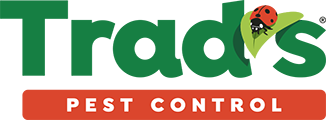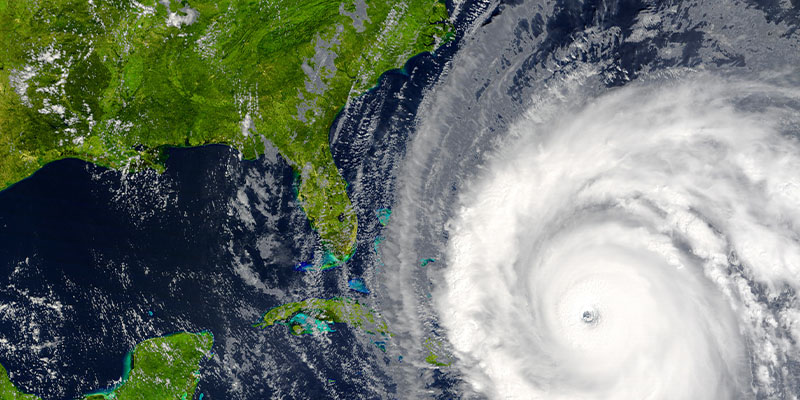As hurricane season goes into its traditional peak, the focus often revolves around preparing for the storm’s direct impact. However, there’s an often-overlooked consequence of tropical storms: the influx of pests into residential homes seeking shelter, food, and water.
In order to better understand this phenomenon, we will explore how hurricanes and tropical storms drive insects and other pests indoors, particularly in Florida, the types of pests commonly found during these events, the potential damage they can cause, and effective strategies homeowners can adopt to prevent infestations during severe weather events.
Hurricane Season And Pest Infestations
Hurricane season is a time of year when many people are concerned about the damage that can be caused by high winds, flooding, and other storm-related hazards. However, it is important to also be aware of the potential for pest infestations during this time. Tropical storm systems can drive insects to look for shelter, food, and water. This can lead to an increase in pests in residential homes, as well as other structures such as businesses and schools.
The Temptation of Shelter, Food, and Water
Tropical storm systems, with their heavy rains, strong winds, and flooding, create unfavorable conditions for insects and pests to survive outdoors. These pests are instinctively driven to seek refuge in sheltered areas that offer the essential resources they need to survive: shelter from the elements, access to food, and a source of water.
Common Pests in Florida During Hurricanes and Tropical Storms
Mosquitoes
Stagnant water left behind by heavy rains provides ideal breeding grounds for mosquitoes.
Cockroaches
These resilient insects seek refuge indoors to escape the storm’s harsh conditions.
Ants
Flooded nests compel ants to move to higher, drier ground – often into homes.
Rodents
Rats and mice are opportunistic during storms, seeking shelter and warmth indoors.
Termites
Termite colonies, often disrupted by flooding, might relocate into homes to establish new colonies.
Stinging Insects
Bees, wasps, and hornets might seek shelter in attics and eaves.
Potential Damage Caused by Storm-Driven Pests
- Property damage. Termites and rodents can cause structural damage by chewing through wood and insulation.
- Health Risks and contamination. Mosquitoes can transmit diseases, while cockroaches can trigger allergies and asthma. Pests can contaminate food and surfaces, leading to health hazards.
- Electrical issues. Rodents chewing through wires can cause electrical fires.
Preventing Pest Infestations During Severe Weather Events
Start by sealing entry points. Close gaps and cracks in your home’s foundation, walls, and windows to keep pests out. Then, follow with an inspection and also maintain. Regularly inspect your property for potential entry points and areas that might attract pests.
Obviously, remove standing water. Be sure to clear gutters, and empty containers, and eliminate stagnant water sources that attract mosquitoes. Additionally, secure food and trash. Store food in airtight containers and dispose of trash properly to reduce food sources for pests.
Now, don’t forget about the landscaping. Trim trees and bushes away from your home, preventing easy access for pests. Of course, it’s always advisable to bring in a professional pest control service. Enlist the help of pest control professionals who can assess, treat, and prevent infestations.
Is It Safe to Use Insecticides and Other Pest Control Treatments Inside a Home?
Generally speaking, it is not safe for homeowners to use insecticides and other pest control treatments when people are in the house. These chemicals can harm human health, even if they are used according to the label.
The Environmental Protection Agency (EPA) recommends that people stay out of treated areas for at least 24 hours after application. This is because the chemicals need time to dry and dissipate before they are safe to breathe in. If you must use insecticides or other pest control treatments while people are in the house, it is important to take precautions to protect their health.
Using insecticides and other pest control treatments indoors requires careful consideration of safety measures, especially when people are present in the house. While many pest control products are designed to be effective and safe when used as directed, it’s important to follow the instructions on the label and take necessary precautions to protect the health of occupants, particularly children, pets, and individuals with sensitivities or allergies. Here are some key points to keep in mind:
- Read and follow instructions. Always read the label and follow the instructions provided by the manufacturer. Each product has specific guidelines for application, dosage, and safety precautions.
- Choose low-risk products. Opt for products that are labeled as low toxicity or reduced-risk. These products are generally safer for indoor use and have less impact on human health and the environment.
- Ventilation. Proper ventilation is crucial when using indoor pest control products. Open windows and doors to allow fresh air to circulate while applying the treatment. This helps disperse any fumes or vapors.
- Targeted application. Apply the treatment only to areas where pests are present or likely to be. Avoid over-application or spraying in areas where it’s not necessary.
- Remove people and pets. If the label recommends evacuating the area during application, make sure everyone, including pets, leaves the room or area. Keep them out until the treatment is dry and the area is well-ventilated.
- Keep food and dishes covered. Cover food and dishes or remove them from the area before applying any treatment. Also, clean countertops and surfaces thoroughly after treatment.
- Store properly. Keep pest control products out of reach of children and pets, and store them in a cool, dry place away from food and food-preparation areas.
- Pets and aquariums. Cover or remove pet food and water dishes during treatment. If you have aquariums, cover them to prevent any treatment from coming into contact with the water.
- Allergies and sensitivities. If anyone in the household has allergies, sensitivities, or respiratory issues, consider using natural or non-chemical pest control methods to minimize potential risks.
- Professional assistance. For more serious infestations or if you’re unsure about using pest control products safely, consider seeking professional pest control services. Professionals are trained to apply treatments effectively and safely.
- Children’s toys and play areas. Be cautious when applying treatments in areas where children play or near their toys. Ensure treatments are dry before allowing children to access these areas again.
- Follow reentry time. Some pest control products have a specified reentry time on the label. Make sure to adhere to this timeline before reoccupying the treated area.
Remember, the goal is to effectively manage pests while prioritizing the safety of your family and pets. If you have concerns about using pest control treatments indoors, consider consulting with a pest control professional who can provide guidance on the most appropriate and safe approach for your specific situation.
Wrapping It All Up
While hurricane season brings concerns about physical damage and safety, the influx of pests into residential homes is an additional challenge. The shelter, food, and water sought by insects and other pests can lead to infestations, causing damage to homes and posing health risks to residents.
By being proactive, sealing entry points, eliminating standing water, and securing food sources, homeowners can greatly reduce the risk of pest infestations during severe weather events. Additionally, seeking professional pest control services can provide targeted solutions that help safeguard homes and families, ensuring that the aftermath of a storm doesn’t include a pest invasion.

